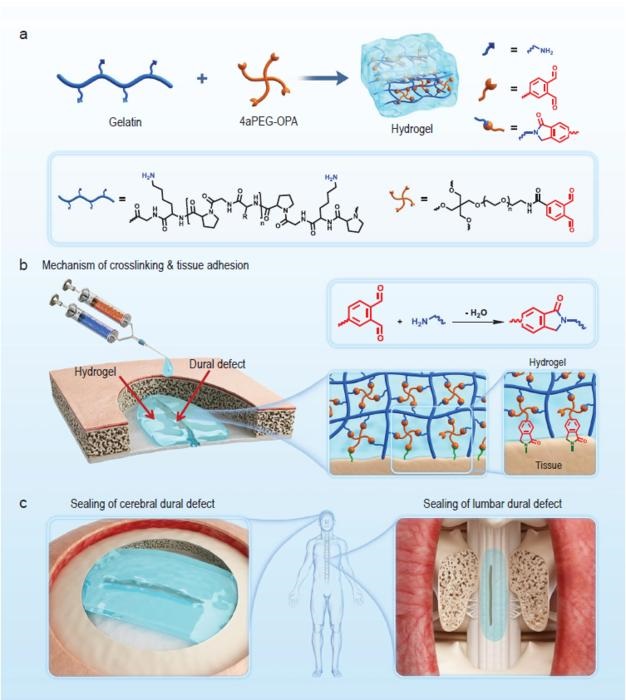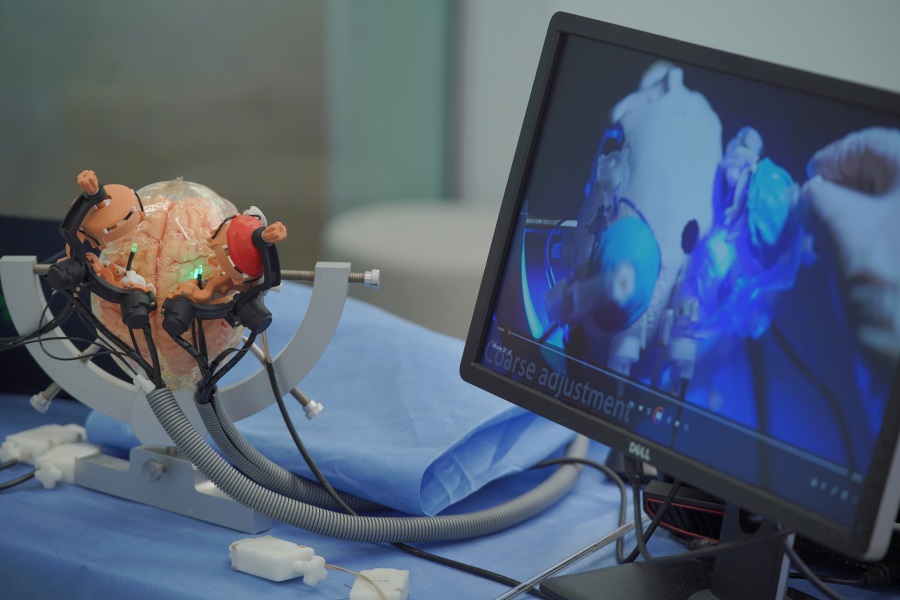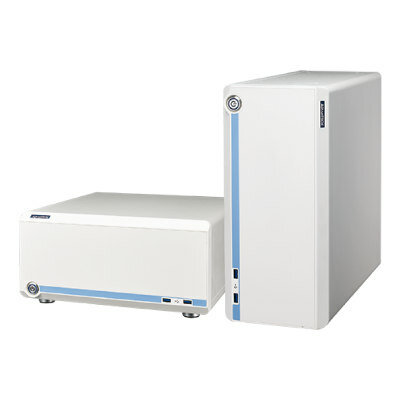AI Software Platform Aims to Synthesize Biomedical Knowledge
|
By HospiMedica International staff writers Posted on 12 Jun 2018 |
nference (Cambridge , MA, USA), which focuses on artificial intelligence (AI)-powered life sciences, is developing an AI software platform to synthesize the exponentially growing biomedical knowledge.
The nference team, comprised of successful serial tech entrepreneurs and leading clinical, data and research scientists trained at Massachusetts Institute of Technology (MIT) and Harvard Medical School, works closely with pharmaceutical partners to solve the challenges in drug discovery and clinical research. This includes the identification of emerging targets and signaling pathways for disease processes with unmet need, stratification of patients in clinical trials, and prioritization of life-cycle opportunities for drugs in development. The nference AI platform plays a central role in augmenting the scientists’ abilities to generate holistic data-driven and unbiased hypotheses in a rapid manner.
nference uses state-of-the-art neural networks (shallow and deep learning models) for real-time, automated extraction of knowledge from the scientific, regulatory and commercial body of literature. The platform enables a diverse set of applications ranging from R&D to commercial strategy and operations in the life sciences ecosystem. nference is making biomedical knowledge computable, and building its AI platform to serve as the connective fabric for various silos of information that exist across health care enterprises.
“Natural language is the connective fabric across all therapeutic areas and support functions of large pharmaceutical companies,” said Venky Soundararajan, Ph.D., Founder and Chief Scientific Officer of nference and Qrativ. “Our AI platform leverages an ensemble of modern neural networks to decode the structure of literature. This kernel helps establish concordance between context-rich unstructured corpora and deep biological insights from structured databases spanning genomics to real world evidence. This presents a paradigm shift toward hypothesis-free scientific research and AI-augmented R&D decision-making.”
“The nference AI technology is enabling an important step forward in digitizing biology. nference’s approach reimagines big pharma R&D by enabling entirely novel hypotheses to emerge from the triangulation of insights across traditionally siloed structured databases and unstructured text documents,” said Diego Miralles, M.D., scientific advisor to nference and former Head of Johnson & Johnson Innovation. “This powerful platform establishes nference as a leader in the ongoing development of AI-powered drug discovery.”
“In addition to empowering drug discovery, the nference AI technology has the potential to transform both early and late-stage clinical development by allowing trialists and pharmaceutical companies to better guide patient selection and sooner anticipate side effects of novel therapies,” said Michael Gibson, M.D, scientific advisor to nference and Chief Executive Officer of the Baim Institute (Formerly Harvard Clinical Research Institute) and PERFUSE Research Institute at Harvard Medical School.
Related Links:
nference
The nference team, comprised of successful serial tech entrepreneurs and leading clinical, data and research scientists trained at Massachusetts Institute of Technology (MIT) and Harvard Medical School, works closely with pharmaceutical partners to solve the challenges in drug discovery and clinical research. This includes the identification of emerging targets and signaling pathways for disease processes with unmet need, stratification of patients in clinical trials, and prioritization of life-cycle opportunities for drugs in development. The nference AI platform plays a central role in augmenting the scientists’ abilities to generate holistic data-driven and unbiased hypotheses in a rapid manner.
nference uses state-of-the-art neural networks (shallow and deep learning models) for real-time, automated extraction of knowledge from the scientific, regulatory and commercial body of literature. The platform enables a diverse set of applications ranging from R&D to commercial strategy and operations in the life sciences ecosystem. nference is making biomedical knowledge computable, and building its AI platform to serve as the connective fabric for various silos of information that exist across health care enterprises.
“Natural language is the connective fabric across all therapeutic areas and support functions of large pharmaceutical companies,” said Venky Soundararajan, Ph.D., Founder and Chief Scientific Officer of nference and Qrativ. “Our AI platform leverages an ensemble of modern neural networks to decode the structure of literature. This kernel helps establish concordance between context-rich unstructured corpora and deep biological insights from structured databases spanning genomics to real world evidence. This presents a paradigm shift toward hypothesis-free scientific research and AI-augmented R&D decision-making.”
“The nference AI technology is enabling an important step forward in digitizing biology. nference’s approach reimagines big pharma R&D by enabling entirely novel hypotheses to emerge from the triangulation of insights across traditionally siloed structured databases and unstructured text documents,” said Diego Miralles, M.D., scientific advisor to nference and former Head of Johnson & Johnson Innovation. “This powerful platform establishes nference as a leader in the ongoing development of AI-powered drug discovery.”
“In addition to empowering drug discovery, the nference AI technology has the potential to transform both early and late-stage clinical development by allowing trialists and pharmaceutical companies to better guide patient selection and sooner anticipate side effects of novel therapies,” said Michael Gibson, M.D, scientific advisor to nference and Chief Executive Officer of the Baim Institute (Formerly Harvard Clinical Research Institute) and PERFUSE Research Institute at Harvard Medical School.
Related Links:
nference
Latest Business News
- MEDICA INNOVATION FORUM for the Healthcare Innovations of the Future
- Johnson & Johnson Acquires Cardiovascular Medical Device Company Shockwave Medical
- Mindray to Acquire Chinese Medical Device Company APT Medical
- Olympus Acquires Korean GI Stent Maker Taewoong Medical
- Karl Storz Acquires British AI Specialist Innersight Labs
- Stryker to Acquire French Joint Replacement Company SERF SAS
- Medical Illumination Acquires Surgical Lighting Specialist Isolux
- 5G Remote-Controlled Robots to Enable Even Cross-Border Surgeries

- International Hospital Federation Announces 2023 IHF Award Winners
- Unprecedented AI Integration Transforming Surgery Landscape, Say Experts

- New WHO Guidelines to Revolutionize AI in Healthcare
- Getinge Acquires US-Based Medical Equipment Provider Healthmark Industries
- Global Surgical Lights Market Driven by Increasing Number of Procedures
- Global Capsule Endoscopy Market Driven by Demand for Accurate Diagnosis of Gastrointestinal Conditions
- Global OR Integration Market Driven by Need for Improved Workflow Efficiency and Productivity
- Global Endoscopy Devices Market Driven by Increasing Adoption of Endoscopes in Surgical Procedures
Channels
Artificial Intelligence
view channel
AI-Powered Algorithm to Revolutionize Detection of Atrial Fibrillation
Atrial fibrillation (AFib), a condition characterized by an irregular and often rapid heart rate, is linked to increased risks of stroke and heart failure. This is because the irregular heartbeat in AFib... Read more
AI Diagnostic Tool Accurately Detects Valvular Disorders Often Missed by Doctors
Doctors generally use stethoscopes to listen for the characteristic lub-dub sounds made by heart valves opening and closing. They also listen for less prominent sounds that indicate problems with these valves.... Read moreCritical Care
view channel
AI Doubles Medical Professionals’ Accuracy in Reading EEG Charts of ICU Patients
Electroencephalography (EEG) readings are crucial for detecting when unconscious patients may be experiencing or are at risk of seizures. EEGs involve placing small sensors on the scalp to measure the... Read moreFlexible Device Enables Sweat Gland Stimulation and Simultaneous Biosensing
Human sweat is rich in biomarkers that can be used to monitor a range of health conditions, from diabetes to genetic disorders. Many users prefer sweat sampling over blood collection because it is painless.... Read more
WHO Publishes First Global Guidelines to Reduce Bloodstream Infections from Catheter Use
Up to 70% of all inpatients require a catheter, specifically a peripherally inserted catheter (PIVC), at some point during their hospital stay. Patients who receive treatments via catheters are particularly... Read moreSurgical Techniques
view channel
Study Warns Against Dangerous Smoke Levels Produced During Endoscopic Gastrointestinal Procedures
Healthcare professionals involved in certain smoke-generating endoscopic gastrointestinal procedures, such as those using electrical current to excise polyps, may be exposed to toxin levels comparable... Read more
New Hydrogel Sealant Effective at Sealing Dural Defects and Preventing Postoperative Adhesion
The dura mater is a fibrous membrane of connective tissue that envelops the brain and spinal cord. In neurosurgical procedures that require access to the brain or spinal cord, opening the dura mater often... Read more
MRI-Guided Multi-Stage Robotic Positioner Enhances Stereotactic Neurosurgery Precision
Magnetic resonance imaging (MRI) offers significant benefits in neurosurgery, providing detailed 3D visualizations of neurovascular structures and tumors. Traditionally, its use has been restricted to... Read morePatient Care
view channelFirst-Of-Its-Kind Portable Germicidal Light Technology Disinfects High-Touch Clinical Surfaces in Seconds
Reducing healthcare-acquired infections (HAIs) remains a pressing issue within global healthcare systems. In the United States alone, 1.7 million patients contract HAIs annually, leading to approximately... Read more
Surgical Capacity Optimization Solution Helps Hospitals Boost OR Utilization
An innovative solution has the capability to transform surgical capacity utilization by targeting the root cause of surgical block time inefficiencies. Fujitsu Limited’s (Tokyo, Japan) Surgical Capacity... Read more
Game-Changing Innovation in Surgical Instrument Sterilization Significantly Improves OR Throughput
A groundbreaking innovation enables hospitals to significantly improve instrument processing time and throughput in operating rooms (ORs) and sterile processing departments. Turbett Surgical, Inc.... Read moreHealth IT
view channel
Machine Learning Model Improves Mortality Risk Prediction for Cardiac Surgery Patients
Machine learning algorithms have been deployed to create predictive models in various medical fields, with some demonstrating improved outcomes compared to their standard-of-care counterparts.... Read more
Strategic Collaboration to Develop and Integrate Generative AI into Healthcare
Top industry experts have underscored the immediate requirement for healthcare systems and hospitals to respond to severe cost and margin pressures. Close to half of U.S. hospitals ended 2022 in the red... Read more
AI-Enabled Operating Rooms Solution Helps Hospitals Maximize Utilization and Unlock Capacity
For healthcare organizations, optimizing operating room (OR) utilization during prime time hours is a complex challenge. Surgeons and clinics face difficulties in finding available slots for booking cases,... Read more
AI Predicts Pancreatic Cancer Three Years before Diagnosis from Patients’ Medical Records
Screening for common cancers like breast, cervix, and prostate cancer relies on relatively simple and highly effective techniques, such as mammograms, Pap smears, and blood tests. These methods have revolutionized... Read morePoint of Care
view channel
POCT for Infectious Diseases Delivers Laboratory Equivalent Pathology Results
On-site pathology tests for infectious diseases in rural and remote locations can achieve the same level of reliability and accuracy as those conducted in hospital laboratories, a recent study suggests.... Read more
Cartridge-Based Hemostasis Analyzer System Enables Faster Coagulation Testing
Quickly assessing a patient's total hemostasis status can be critical to influencing clinical outcomes and using blood products. Haemonetics Corporation (Boston, MA, USA) has now obtained 510(k) clearance... Read more














